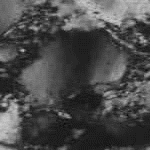
sharp extinction
single orientation of extinction across whole grain, implies low density of dislocations
distinct bands of different extinction that are obviously part of the same crystal. a more localised form of undulose extinction where some concentration of dislocation has taken place. In picture below they trend NE-SW
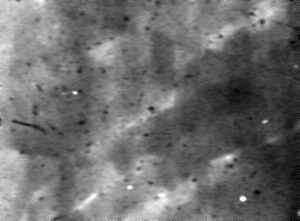
deformation lamellae
sharp sided, narrow and repeating bands usually forming sub-parallel to a specific crystallographic orientation, such as the basal plane in quartz. can be due to a number of processes, but are commonly zones of concentrated slip on a given slip system. In picture below they trend NE-SW
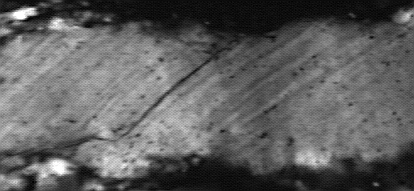
subgrain
small regions within a grain with uniform extinction, but clearly related to other subgrains in orientation, which together make up a whole grain. The misorientation sufficient to declare that two regions are still subgrains is to say that the misorientation is less than 7 degrees, but this is impossible to measure using a standard microscope and stage. Forms by migration and accumulation of dislocations with the same sign. Often concentrated at grain edges at low temperatures.
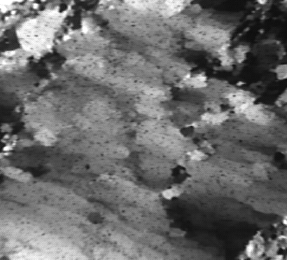
defects
imperfections in a crystal lattice. include point, line and plane defects. Abundant in all natural crystals.
Kink bands Parallel sided zone of differently oriented crystal within a single grain, with no special "twin orientation" between zone and host crystal. Often form by either by a polygonization process where a gently curved crystal resolves itself into several low defect bands separated by tilt wall boundaries, or by a gradual rotation and growth of the zone from a small elongate nucleus. The former are common in high temperature olivine, the latter in micas & kyanites.
twins
parallel sided zone of differently oriented crystal within a single grain, with special "twin orientation" between zone and host crystal. The amount of strain undergone during the passage of a twin boundary is fixed, and no further twin related strain takes place once a twin has passed a particular point. Very common in deformed calcite and plagioclase.
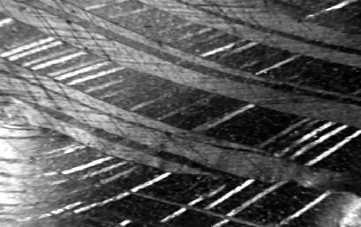
VIEPS Deformation Microstructures Course Lab 1 - Deformation Mechanisms
Copyright Mark Jessell & Paul Bons 2000